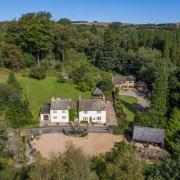Off the beaten track is a phrase that could have been invented for several parts of Furness Peninsula. From Walney Island, part of Barrow in Furness but separated from the mainland by Walney Channel and a smattering of unspoilt yet tiny Lakelands villages to tourist attractions such as Gleaston Water Mill – an out of the way working water mill restored decades ago and well worth a visit. These are places where you really do feel in the middle of nowhere where wild coastlines, ancient mills and the well-known ruins of Furness Abbey make it a great place to live.
There are towns like Barrow to choose from as well as nearby Dalton in Furness, bustling Ulverston where community life is busy and a whole host of hamlets and villages offering properties for most tastes and budgets. Step into glorious isolation on the likes of Roa Island which, despite have a very small population of around 100 people, still sustains a yacht club and a hidden gem of a café, Bosun’s Locker as well as an interesting history, including the former home of Furness industrialist William Schneider who built Villa Marina as a holiday retreat.
While property prices are rising, it's a great option for an area where, in places like Barrow In Furness, you can get more for your money while still being a stone’s throw from the Lake District National Park. Average prices in the town, on the tip of the peninsula, for a terraced home are £118,000, semi-detached homes were £212,000 and detached £346,000.

A place to explore
The geography of this corner of our region make it an interesting place to discover. In Barrow, head to the Dock Museum where you can learn about its history from cave finds to its shipbuilding traditions. Cross the bridge to Walney Island and you’ll find two wildlife reserves. South Walney is home to the only grey seal colony in the region. With stunning views across Morecambe bay, this shingle
island reserve is full of interest and a fantastic place for bird watching. North Walney’s reserve covers an area which has been used since prehistoric times. The reserve’s 350-acres exhibit a great variety of habitats, including sand dunes, heath, salt marsh, sandy beach, shingle and scrub, which combine to make it a nationally important wildlife site.
Head away from Walney and Barrow-in Furness to Furness Abbey, an English Heritage site also supported by a small, volunteer charity, the Furness Abbey Fellowship, who help promote its history. The abbey was founded in 1123 by Stephen, later King of England and the abbey was the second richest Cistercian monastery in England.
In Dalton-in-Furness, you can spot the 14th-century Pele Tower, known as Dalton Castle, built as a place of refuge for monks from Furness Abbey against Scottish raiders.

Head to Ulverston
This busy market town is a gem on the peninsula where you can stroll through cobbled streets taking in its history. There is a thriving festival and events calendar in the town and this month the Ulverston Lantern Festival will take place. Being held on September 16th, four ‘rivers of lights’ processions of people holding self-made lanterns converge at County Square in the evening – a real visual spectacle.
Birthplace to Stan Laurel, it is also home to the Laurel and Hardy Museum – the only one in the world. A little out of town is Hoad Monument built to honour Sir John Barrow, a founder member of the Royal Geographical Society and explorer. You can climb to the stop for panoramic views of Morecambe Bay and the nearby fells – it is open to the public if the flag is flying.
Ulverston is also the starting point of the more than 70-mile Cumbria Way, a typically five day hike from Ulverston to Carlisle where your efforts are rewarded with views of some of the most beautiful landscapes the Lake District has to offer.
READ MORE: 5 things you should know about Ulverston



























